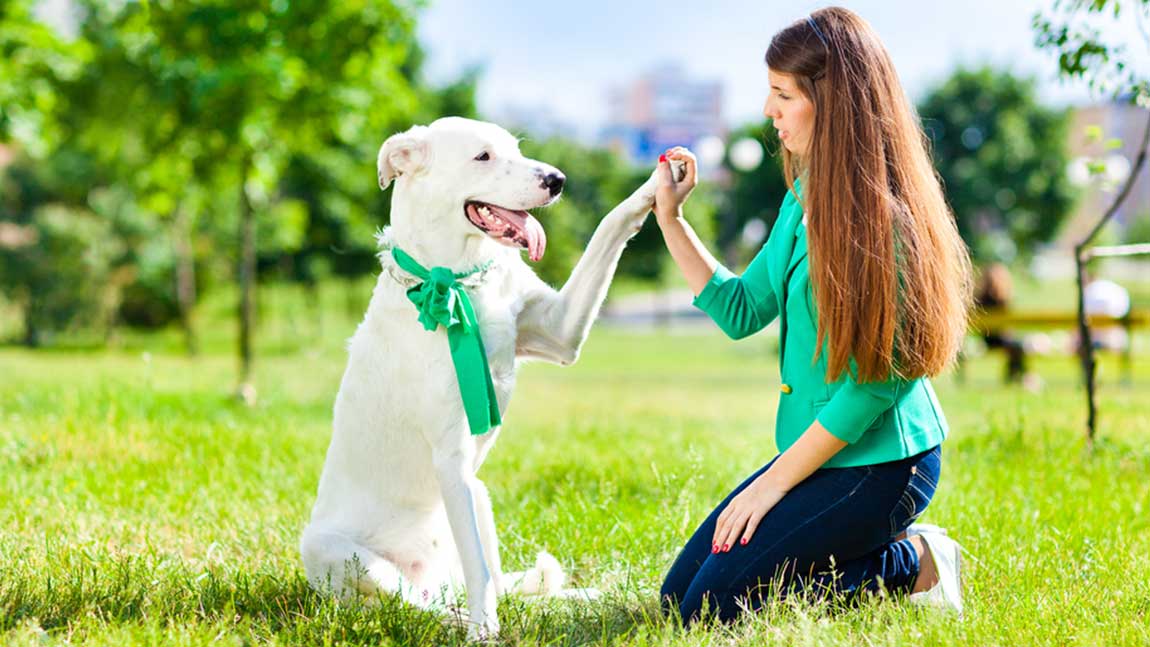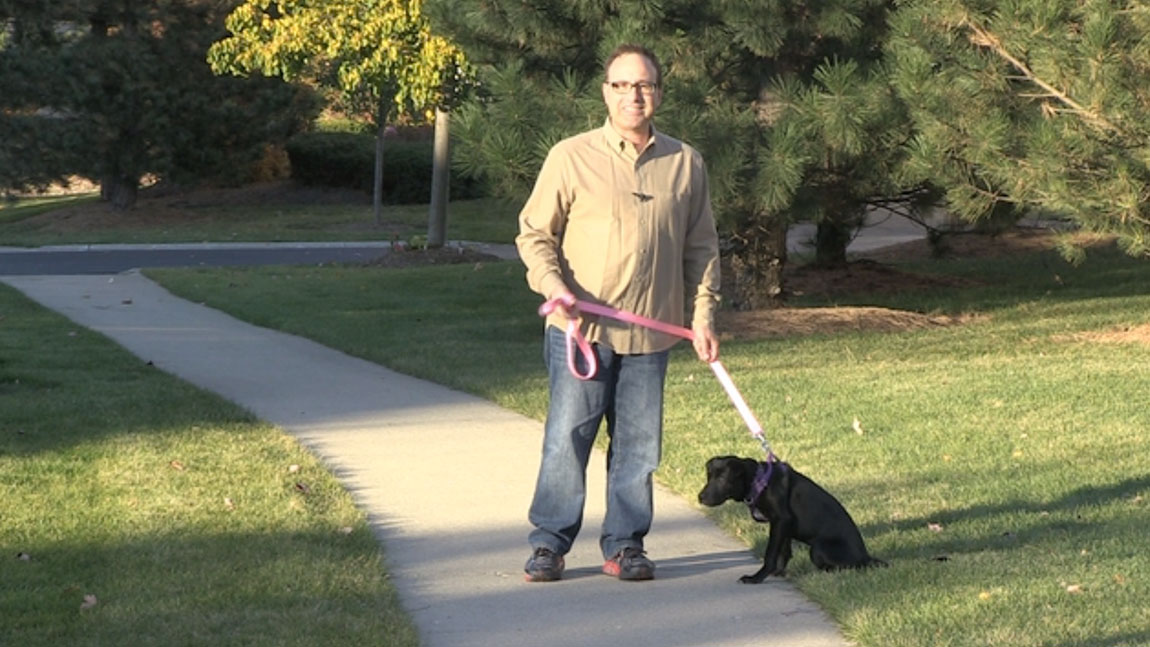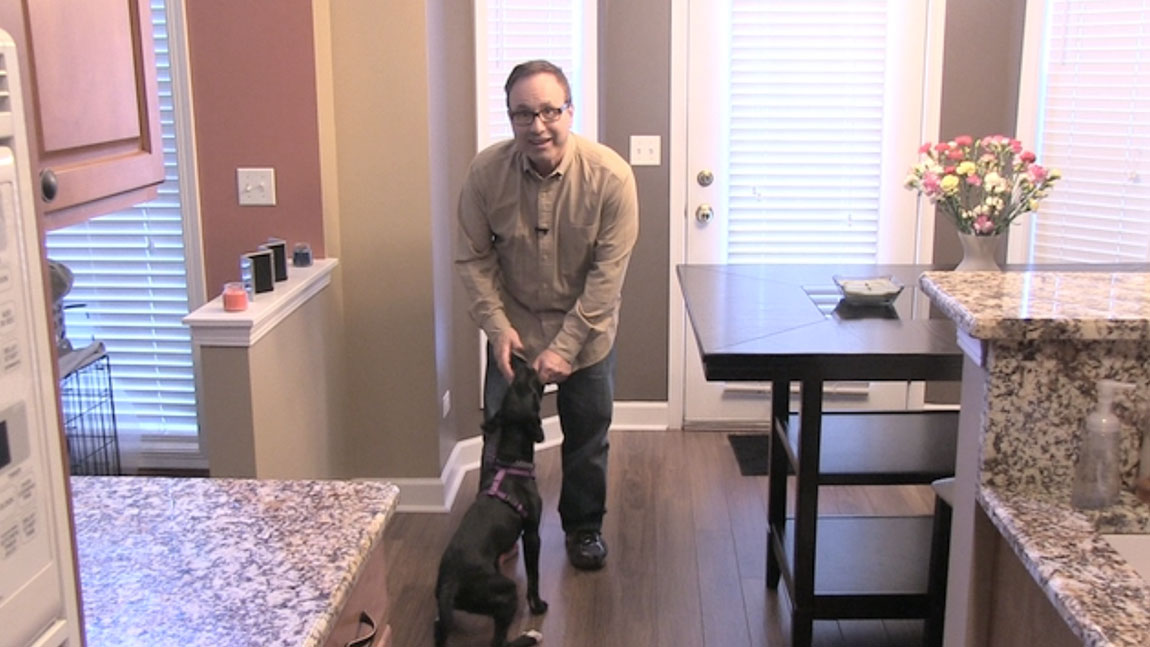By Steve Dale
It may seem logical that punishment can stop a pet’s bad behavior. Punishment can vary widely from using a rolled-up newspaper to strike (or threaten to strike) a pet; yelling or speaking in an angry voice; or delivering a jolt with an electronic dog collar.
So, if punishment stops behavior we don’t want, what’s the problem?
Why Punishment is Ineffective
While punishment can interrupt bad behavior, it doesn’t teach your dog what alternative behavior you prefer.
For example, if you shove your knee into your Labrador’s chest when it joyfully jumps on guests entering your home, the dog might learn not to jump. After all, it hurts when human knees are ramming into her belly.
However, this action gives the dog no information on how to act. Imagine if my wife put her knee in my chest every time I returned home and kissed her hello. I would naturally ask, “Well, what do you want me to do?”
Since dogs can’t communicate like that, we need to convey our wishes some other way.
Positive Reinforcement Works Better
Through positive reinforcement training, we can show our dogs what they should do instead of jumping when people come to the door. Perhaps they can be encouraged to run off to another room to snatch a toy when guests arrive, or maybe they’re simply taught to sit instead of jumping if they want our attention.
If people continue to knee their dogs, they could erode the human-animal bond – a common outcome when punishment is used. That’s because the poor dog, happy to see people, is confused. The dog has no way to understand why people are hurting her. At best, she won’t greet people with quite the same enthusiasm. And at worst, she may respond aggressively. In a sense, who can blame her?
You’d think that ignoring people at the door is what the family wants – but it’s not at all what the family wants; they just don’t want a jumping dog. They become disappointed with their dog, who they complain “doesn’t care” when we come home. As a result, they treat the dog that they feel is uncaring differently, perhaps with some skepticism. So, the dog responds to the family differently – and like a snowball, the confusion and communication gap grows.
Separating Fact from Fiction
Misinformation about punishment reinforces common myths. For example, some people believe, “I have to punish my dog so it understands I am the boss.” Still others think, “If I don’t dominate my dog, then my dog will dominate me.” Both statements are utterly false, popularized in recent years by popular culture.
We never need to punish a dog to show it “who’s boss,” because dogs don’t want to dominate people – the notion is ridiculous. While dogs do thrive on structure, people have a different relationship with dogs than dogs have with dogs. And dogs know that we are not dogs.
The idea that the dog will take charge if you don’t is also rubbish. If you don’t communicate to a dog what acceptable behavior is, however, then a dog will make her own decisions. Those decisions are essentially based on what keeps a dog safe and is most rewarding. For example, the dog may jump on your bed when you’re not watching. It’s safe up there (especially for a small dog who prefers to have a view), but most of all, the bed is comfortable and smells like you – so it’s exceedingly rewarding.
Humans Rule
Whether it’s a dog jumping up on the bed, running out the front door, or jumping excitedly on people as they enter the home – none of these behaviors occur because the dog wants to be dominant. In fact, there is no behavior interaction between dogs and people where dominance ever comes into play.
Another issue is dogs that purposefully disobey, or are sometimes perceived as doing so by their human owners. A natural response might be to punish the dog. I often hear about dogs that intentionally get on the bed, even though they know better. The first thing to remember is that the dog may not know she is not supposed to be on the bed. Just because you believe you’ve effectively taught a dog doesn’t make it true.
Another issue is consistency. If the kids secretly allow pup on the bed, how does the dog know not to do it when mom and dad are around? True, some dogs actually figure it out, but some do not.
Does punishment work to keep the dog off the bed? It might. Besides, unless you’ve sufficiently instructed the dog not to (or you close the door), it’s a good bet that the dog will jump on the bed when you’re not home. So, it’s important to teach the dog what you prefer her cozy spot should be – maybe a comfy chair or dare I suggest the floor. Encourage the dog to lie where you want using positive reinforcement – the most efficient and effective way to teach dogs.
Make Learning Fun and Humane
Dogs learn best through positive reinforcement. The real value is that it teaches dogs which behaviors we want to see. Positive reinforcement makes learning fun, because it’s motivating.
In the early 1950s, pioneering veterinary behaviorist Dr. R. K. Anderson was among the first to employ positive reinforcement, document it and ultimately publish his successes in peer-reviewed journals.
He theorized that aggressive dogs he worked with at an animal shelter were actually fearful, and punishment only intensified the fear. Instead of punishment, Anderson used treats to build trust and as a teaching tool. At the time, he was maligned as the “cookie pusher.” Of course, it turns out that the late Dr. Anderson was correct. Many studies have since confirmed and reconfirmed that dogs learn best when positive reinforcement is used.
Another concern about punishment is what Dr. Anderson innately understood over 60 years ago. Dogs often act poorly as a result of anxiety. For example, let’s say a dog has separation anxiety. The dog barks non-stop, even howls, after the owner departs. If the owner runs back inside the house and yells at the dog, the result is that the dog’s anxiety level is likely to escalate.
Being mere humans, of course, we will sometimes lose our tempers and holler at our pets. And sometimes yelling is necessary – for example, if it’s a matter of life and death. So I am not suggesting that we never punish our dogs.
But as a teaching tool, positive reinforcement isn’t only a more effective way to teach, it’s also more ethical. And perhaps that is the most important point. Today, over 90 percent of pet owners in North America consider their dogs as cherished members of the family. Zapping our best friends with an electronic collar or literally kneeing them in the chest just isn’t kind. For all the love our dogs unconditionally offer every day, we should respond in kind.


